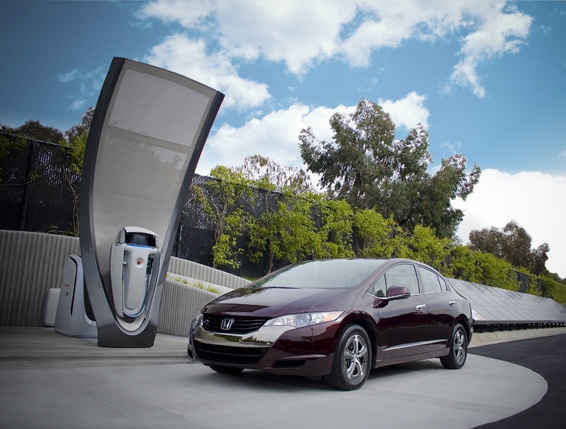
Putting the “Science” in “Science Fiction”: Zeppelins and Airships
The zeppelin – also known as the blimp, dirigible or airship – is a common vehicle in science-fiction. The steampunk and dieselpunk sub-genres are especially known for a love of zeppelins, with science-fiction series like Airborne and Leviathan being set primarily aboard these vessels. Unlike most other science-fiction technologies, the zeppelin was also used in the past, but has mostly been abandoned today, although advances in technology and changes in thinking may lead to a resurgence of this type of vessel in the future.
A zeppelin is the largest of what are called lighter-than-air craft, aircraft that fly by harnessing gases that weigh less than the air around them, rather than using lift generated by wings or rotors like planes and helicopters do. Trapping a large amount of lighter-than-air gas within an envelope causes the vehicle to rise, carrying its payload with it. The gases used separate zeppelins from hot air balloons, which heat air in order to make it rise into the balloon in order to carry it upwards. Generally, this is achieved by having a large rigid balloon filled with a lighter-than-air gas with a cabin called a gondola attached to its bottom, though sometimes the gondola extends inside the envelope itself. The gondola contains the bridge, crew quarters and passenger or storage space, as well as the engines that are used to provide forward thrust for the zeppelin.
Zeppelins have a long and storied history, with the first powered zeppelin flight occurring in 1852. The golden age of the zeppelin did not arrive until the early 1900s, however, with the creation of enormous airships capable of flying from Europe to America non-stop. Zeppelins were even used during World War I, with German zeppelins dropping bombs on London. These bombing raids did very little actual damage due to lack of payload and poor accuracy, but it helped bring the zeppelin into the public consciousness. After the war, several countries continued to make zeppelins of various sizes, using them to ferry passengers, carry cargo and perform naval patrols.
Unfortunately, the end of the golden age of airships came on May 6, 1937, with the Hindenburg disaster. This iconic disaster occurred when the Hindenburg zeppelin burst into flames and fell to the ground just before attaching to its mooring station in Lakehurst, New Jersey, after crossing the Atlantic from Germany. Although zeppelins had been lost due to accidents or bad weather before, the Hindenburg disaster happened in front of news cameras and reporters, and so the public could watch the tragedy first-hand. Seeing the Hindenburg burn shattered the public's confidence in the safety of airships, and they quickly fell out of favor, remaining quite rare until the present day.
The reason that older zeppelins were so vulnerable to accident or enemy attack was because of the lifting gas they used. The first airships had envelopes filled with hydrogen gas, an incredibly flammable substance. Even though many zeppelins had sets of individual gas cells inside their envelopes, rather than a single large one, a single spark or flame that managed to penetrate a cell could cause a chain reaction that would turn the airship into an inferno. Modern airships have solved this problem by using helium, a safely inert gas, rather than combustible hydrogen. New advances in materials have also improved the safety of airships with innovations like self-sealing gas cells, capable of preventing gas from leaking out even if a gas cell is punctured.
Although zeppelins and blimps are uncommon today, there are a few notable examples, such as the Goodyear Blimps. Although public perception of zeppelins has yet to recover from the Hindenburg disaster and people have gotten used to the sight of dirigibles, there are attempts to revitalize the airship concept using advanced technology. Besides the potential safety concerns, zeppelins have always been slower than other aircraft and have had some trouble controlling their buoyancy during long flights where large amounts of fuel are expended, or cargo is unloaded. In the past, reducing weight caused the zeppelin to rise, but a new system is being tested on the experimental Pelican airship. This system pumps helium out of the gas cells and pressurizes it, causing its density to increase and lift to decrease, in response to decreases in weight.
With issues of safety and buoyancy potentially solved, the way is open for airships to once again become a viable option. Although airships cannot fly as fast as airplanes, they are much more fuel-efficient, as their engines only need to propel them and not provide lift. This efficiency opens up the possibility of airships that use electric motors and solar cells to provide endurance – limited only by the crew's needs. This would allow zeppelins to remain in the air for weeks or months at a time, and by combining this with drone technology, they could stay up virtually forever. Airships can also take off and land vertically without any need for a prepared runway, and can carry heavy loads. These capabilities make zeppelins potentially useful for military surveillance and patrol uses, and civilian groups could find a use for them in search and rescue, observation of traffic, wildlife or other targets, bulk transport, tourism and a myriad of other uses. Although airships will never replace airplanes or helicopters, they could certainly offer an alternative to sending packages by ship. Some scientists theorize that airships could even be used as a cheap and efficient system for delivering payloads into Earth orbit. Zeppelins and airships were once considered the future of aviation, and it is still possible that they will live up to the hopes of their creators almost a century later.
Photo: Emslichter, Pixabay












